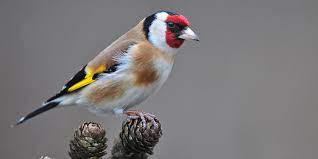Kennedy Wild Bird Food Guide to the Goldfinch
The Goldfinch bird, whose scientific name is Carduelis Carduelis, is a multi-coloured bird with distinctive patterns and markings, so you shouldn't have any trouble spotting one of these striking creatures amongst the wildlife! To learn more about Goldfinch birds themselves, where to find them and how to look after them, read the rest of this guide to discover our top tips.Goldfinch bird information
To spot an adult Goldfinch bird, you'll need to look out for their bright red faces, their yellow wing patches and their jet black tails. Young Goldfinches have a mixture of cream, black and brown feathers, with a hint of yellow on their wings, similarly to the adults. There are also some slight differences between the male and female Goldfinch. These differences can be hard to spot, but if you're eagle-eyed and you know what to look out for, you'll have no trouble at all! Read the table below to discover the main differences:
There are also some slight differences between the male and female Goldfinch. These differences can be hard to spot, but if you're eagle-eyed and you know what to look out for, you'll have no trouble at all! Read the table below to discover the main differences:
| male goldfinch | female goldfinch |
|
|
What's the best Goldfinch bird food?
If you're looking to attract a multitude of Goldfinch birds to your garden, niger seed will be your best bet. Niger seed is a firm favourite for these birds, and it provides lots of nutrients and energy too. Alternatively, try our specially blended Superior Finch Mixture. To make sure your garden visitors get the most out of this delicious seed, it's best to invest in an appropriate Goldfinch bird feeder that will hold the tiny seeds in, all whilst providing room for your Goldfinches to sample the feed.Where do Goldfinches live?
There are currently 1.2 million breeding pairs of Goldfinches in the UK, and they can be seen all year round in areas such as parks, gardens and places where there are scattered trees and bushes. If you live in Southern England, you may have a better chance of spotting a Goldfinch, as they are more common around these parts compared to Northern England. If you're lucky enough to spot one of these majestic birds on your travels, don't forget to log your sightings on our BirdSpotter map!
